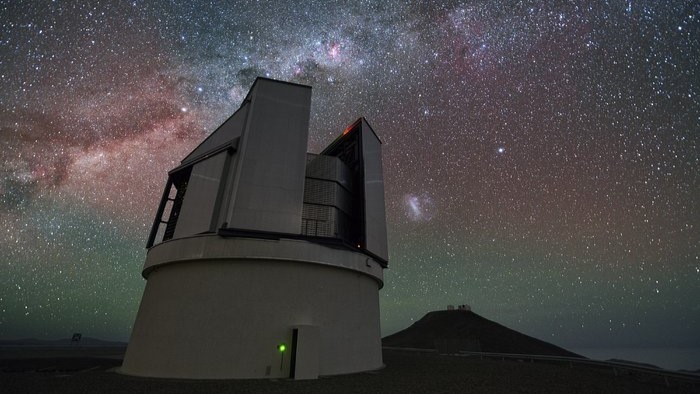'We have changed the view of our galaxy forever': Astronomers capture most detailed ever infrared map of the Milky Way
Astronomers at the European Southern Observatory have released the largest infrared map of the Milky Way ever. The enormous dataset contains millions of new objects, and the researchers expect to scour it for discoveries for years to come.

Astronomers have created the most detailed infrared map of the Milky Way — and it contains more than 1.5 billion objects.
Made using 13 years of observations across 420 nights, the new map charts a vast number of stars, "failed" brown dwarfs, free-floating planets and hypervelocity suns launched into space after close encounters with our galaxy's central supermassive black hole.
The record-breaking map was stitched together from 200,000 images captured by the European Southern Observatory's (ESO) Visible and Infrared Survey Telescope for Astronomy (VISTA) telescope in Chile. The researchers published their findings Sept. 26. in the journal Astronomy & Astrophysics.
"We made so many discoveries, we have changed the view of our Galaxy forever," project lead and study co-author Dante Minniti, an astrophysicist at Universidad Andrés Bello in Chile, said in a statement.
Related: 10 discoveries that prove Einstein was right about the universe — and 1 that proves him wrong
To make the map, the astronomers used the VISTA InfraRed CAMera (VIRCAM), an infrared camera which peered through the dust and gas permeating the Milky Way to discover radiation from previously unnoticed sources.
This enabled the telescope to pick up the infrared glow from "failed stars" — objects that straddle the line between giant planets and small stars, also known as brown dwarfs — and gravitationally unbound rogue planets on hundreds of nights between 2010 and 2023. Repeat observations made in each region of the sky also enabled the team to track how objects move and how their brightnesses changed over time.
Get the world’s most fascinating discoveries delivered straight to your inbox.
The resulting dataset is massive: covering an area of sky equivalent to the width of 8600 full moons and containing about 10 times more objects than the map the same team released in 2012. Now that it has been completed, the researchers will await upgrades to VISTA and ESO's Very Large Telescope that will enable them to break incoming light down into its component spectra so that they can better understand the chemical compositions of the newly discovered objects.

Ben Turner is a U.K. based writer and editor at Live Science. He covers physics and astronomy, tech and climate change. He graduated from University College London with a degree in particle physics before training as a journalist. When he's not writing, Ben enjoys reading literature, playing the guitar and embarrassing himself with chess.


